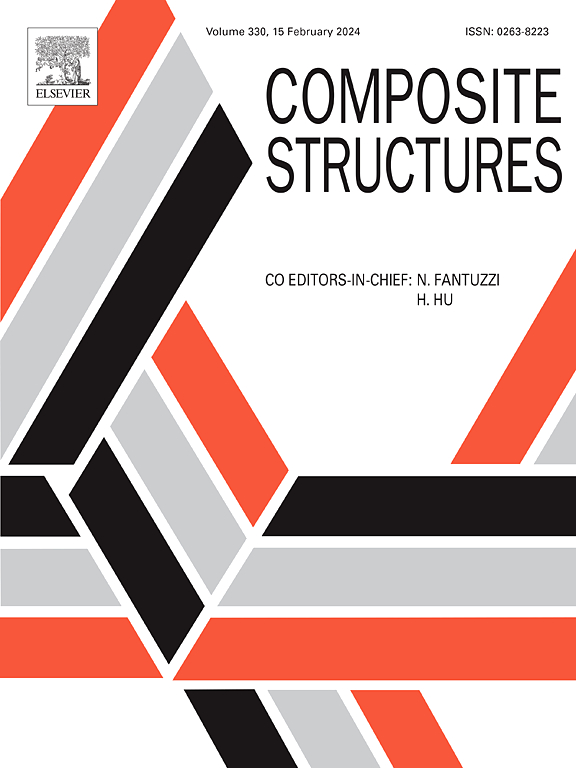Nonlinear numerical simulation of plasticity, thermal and creep in particle-reinforced composites with a new three-dimensional VCFEM
IF 6.3
2区 材料科学
Q1 MATERIALS SCIENCE, COMPOSITES
引用次数: 0
Abstract
This paper proposes a new three-dimensional Voronoi-cell finite element method (3D VCFEM), which incorporates plastic, thermal and creep strains, for the numerical simulation of particle-reinforced composites (PRCs). Firstly, the 3D VCFEM stress function, which contains interaction stress terms, is developed by improving the constitutive relation and nonlinear G-matrix of the complementary energy functional in 3D VCFEM, this results in the creation of a new 3D nonlinear complementary energy functional. Secondly, a comparison is conducted between the calculation results obtained from 3D VCFEM and ABAQUS in order to verify the validity and accuracy of the 3D VCFEM. In comparison to the finite element method, the 3D VCFEM exhibits superior capabilities in terms of adaptability and efficiency. Subsequently, the potential of the 3D VCFEM in simulating real materials with randomly distributed tremendous amounts of particles is demonstrated by an example of multi-inclusion PRCs with arbitrary element and integral domains. Finally, the impact of the stress function on the 3D VCFEM stress field is examined.
基于新型三维VCFEM的颗粒增强复合材料塑性、热和蠕变非线性数值模拟
本文提出了一种将塑性应变、热应变和蠕变应变结合起来的三维Voronoi-cell有限元方法(3D VCFEM),用于颗粒增强复合材料(prc)的数值模拟。首先,通过改进三维VCFEM中互补能量泛函的本构关系和非线性g矩阵,建立了包含相互作用应力项的三维VCFEM应力函数,从而建立了新的三维非线性互补能量泛函;其次,将三维VCFEM计算结果与ABAQUS计算结果进行对比,验证三维VCFEM的有效性和准确性。与有限元方法相比,三维VCFEM在适应性和效率方面表现出更强的能力。随后,通过具有任意单元和积分域的多包体prc实例,证明了三维VCFEM在模拟具有随机分布的大量粒子的真实材料方面的潜力。最后,分析了应力函数对三维VCFEM应力场的影响。
本文章由计算机程序翻译,如有差异,请以英文原文为准。
求助全文
约1分钟内获得全文
求助全文
来源期刊

Composite Structures
工程技术-材料科学:复合
CiteScore
12.00
自引率
12.70%
发文量
1246
审稿时长
78 days
期刊介绍:
The past few decades have seen outstanding advances in the use of composite materials in structural applications. There can be little doubt that, within engineering circles, composites have revolutionised traditional design concepts and made possible an unparalleled range of new and exciting possibilities as viable materials for construction. Composite Structures, an International Journal, disseminates knowledge between users, manufacturers, designers and researchers involved in structures or structural components manufactured using composite materials.
The journal publishes papers which contribute to knowledge in the use of composite materials in engineering structures. Papers deal with design, research and development studies, experimental investigations, theoretical analysis and fabrication techniques relevant to the application of composites in load-bearing components for assemblies, ranging from individual components such as plates and shells to complete composite structures.
 求助内容:
求助内容: 应助结果提醒方式:
应助结果提醒方式:


